Thighplasty or Thigh Lift or Thigh Reduction
The purpose of the thighplasty is to improve the appearance of the thighs. After significant weight loss, many patients develop excess inner thigh skin and fat. Many patients require removal of this redundant inner thigh skin and fat. There are different types of thighplasties. Depending on the extent of the thigh's excess skin and fat, the appropriate thighplasty will be chosen. There is a crescent thigh lift. During a crescent thigh lift, a crescent incision is placed high in the inner thigh, and a crescent area of upper inner thigh skin and fat is removed. There is a modified medial vertical thighplasty. During this procedure, an incision is placed from the groin partially down the inner thigh. There is a combined crescent and modified vertical medial thigh lift resulting in a modified T thighplasty. During this procedure, a T-shaped incision is created in the upper inner thigh. The more common procedure is a vertical full medial thigh reduction. During this procedure, an incision is made from the groin to the inner knee, and a large elliptical area of skin and fat is removed. Often, this is accompanied by thigh liposuction. A less common thighplasty is the vertical lateral or outer thigh reduction where the incision is made from the outer hip to the outer knee. This is reserved for more extreme thigh cases. Sometimes a thigh reduction is covered by your insurance. Thighplasty coverage is entirely dependent on the quality of your health care provider and the anatomy of your thighs with concomitant comorbidities like rashes. The thighplasty surgery takes approximately three to five hours, depending on the thighplasty surgery that is required. Typically, thighplasty surgery is performed on an outpatient basis and performed under general anesthesia. After a thighplasty, you are expected to wear your compression garments for a minimum of six weeks. You may need to wear your compression garments longer if your leg or ankle swelling continues.
Recovery varies, but recovery is usually approximately three to four weeks. You can return to a sitting job approximately two to three weeks after your thigh reduction. You can return to a very active job approximately six to eight weeks after a thigh reduction. About one month after your thighplasty, you can return to light activity and gym work. You can return to heavy gym activity approximately two to three months after your thigh reduction. Most of the leg swelling should be gone approximately six to eight weeks after a thigh reduction. Pain is variable; however, most patients will require some pain medications for the first seven to ten days. The incision varies depending on the amount of excess skin and fat of the inner thigh. Sometimes the incision is isolated to just the upper inner thigh; sometimes, the incision is made from the groin to the knee. Typically, drains are required for thigh reduction surgery. Usually, drains remain for approximately two weeks after a thigh reduction. Approximately four to six after your thigh reduction, you can start exercising. You should be able to have intercourse approximately three to four weeks after your thigh reduction. Typically, you do not need massages for your thigh reduction. For approximately six weeks after your thigh reduction, you will be expected to wear your medical compression garment. Once all your thigh incisions have healed, you can place scar cream on your thigh reduction incision to minimize scarring.
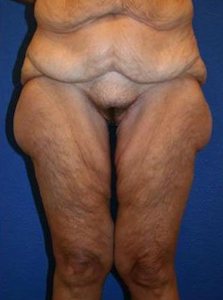
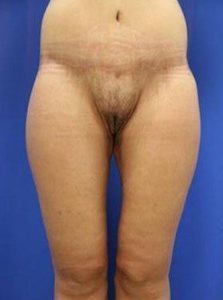
Before: Medial Thigh Lift After: Medial Thigh Lift
(Courtesy J. Timothy Katzen, MD)
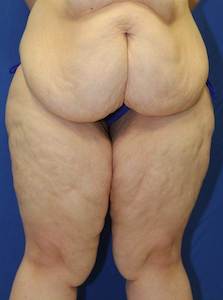
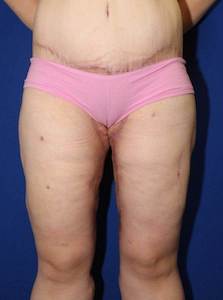
Before: Medial Thigh Lift After: Medial Thigh Lift
(Courtesy J. Timothy Katzen, MD)
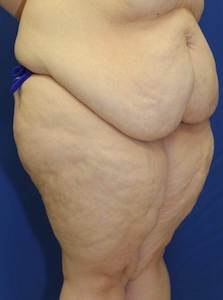
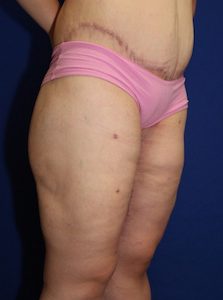
Before: Medial Thigh Lift After: Medial Thigh Lift
(Courtesy J. Timothy Katzen, MD)
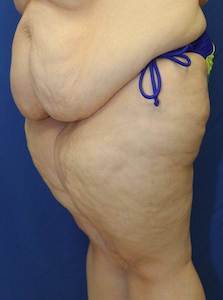
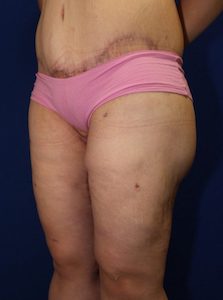
Before: Medial Thigh Lift After: Medial Thigh Lift
(Courtesy J. Timothy Katzen, MD)
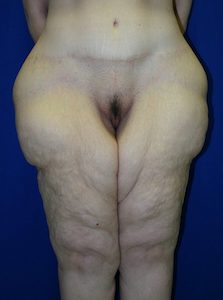
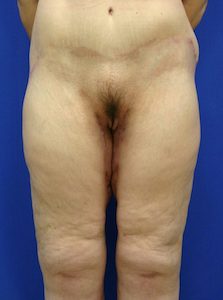
Before: Medial Thigh Lift After: Medial Thigh Lift
(Courtesy J. Timothy Katzen, MD)
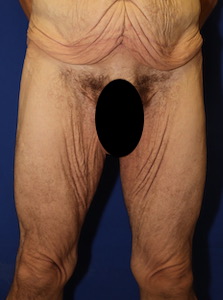
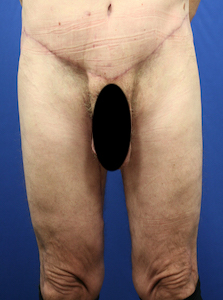
Before: Male Medial Thigh Lift After: Male Medial Thigh Lift
(Courtesy J. Timothy Katzen, MD)
